IDocs (Interface Documents) are modeled as UML classes (cf. TXTRAW01). Such classes can be serialized into SAP IDoc tables (arrays) by the <<SAPIDocRecordComposer>>.
There are two situations in which you may want to compose an IDoc data buffer:
-
You want to map an IDoc object (e.g. TXTRAW01, see figure below) to a String, keeping the structure of the data (mostly done, if you want to write the IDoc to a file).
This is done by an action having the stereotype <<SAPIDocComposer>> (see Composing to String). -
You want to map an IDoc object (e.g. TXTRAW01, see figure below) to a SAP tables structure (mostly done, if you want to perform an SAP RFC).
This is done by an action having the stereotype <<SAPIDocRecordComposer>> (see Composing to SAP Tables).After having composed an IDoc object, you can send it to an SAP backend using IDOC_INBOUND_ASYNCHRONOUS. The necessary interface is already part of the base components. Refer to tRFC Service for more information on how to implement the call.
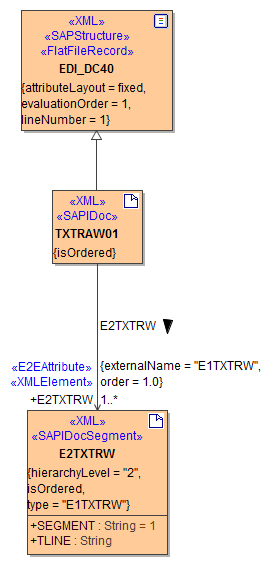
Composing to String: <<SAPIDocComposer>>
The <<SAPIDocComposer> takes one ore more IDoc objects as input and composes a String containing the object data. The structure of the data is kept (padding).
NameTypeDirectionDescriptionanyObjectFlowAnyinParsed IDoc object(s)The class specifying the type of this parameter must have stereotype <<SAPIDoc>>.idocStringStringoutString containing IDoc data (e.g. the content of an IDoc file)
The following examples are demonstrating some applications of the <<SAPIDocComposer>>.
Composing a Single IDoc to an IDoc String
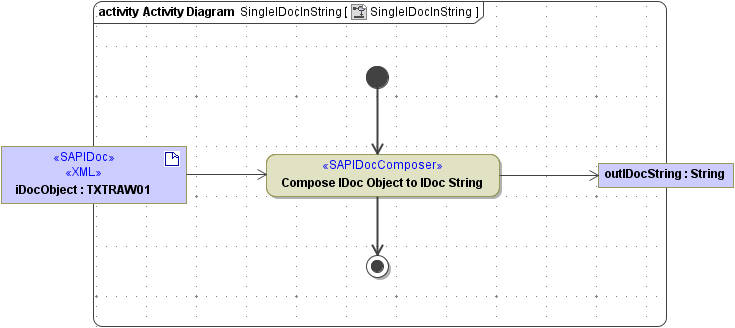
Composing Multiple IDocs to an IDoc String
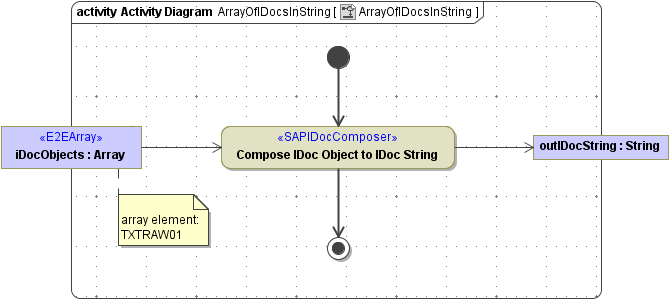
Composing to SAP Tables: <<SAPIDocRecordComposer>>
The <<SAPIDocRecordComposer> takes one ore more IDoc objects as input and composes an array of structured control records and an array of structured data records (as expected for SAP tables).
NameTypeDirectionDescriptionanyObjectFlowAnyinParsed IDoc object(s)The class specifying the type of this parameter must have stereotype <<SAPIDoc>>.EDI_DC40ArrayoutArray of IDoc structured control recordsEDI_DD40ArrayoutArray of IDoc structured data records
Composing a Single IDoc to SAP Tables
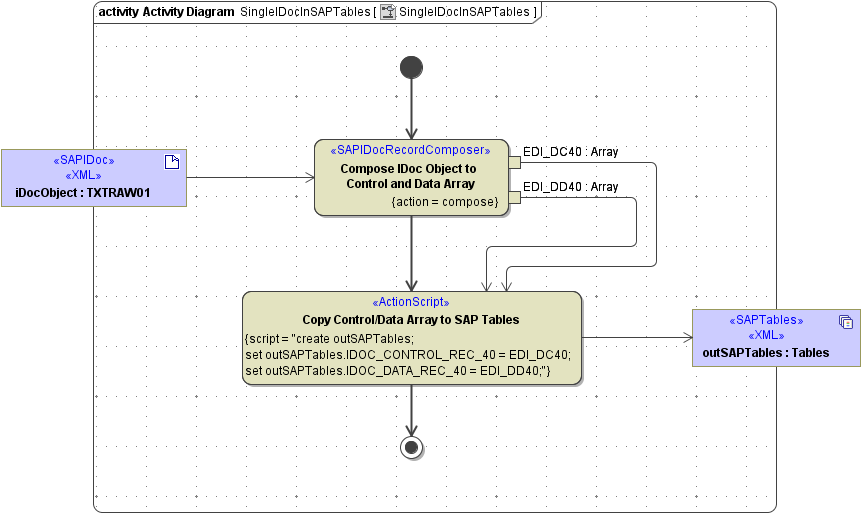
Composing Multiple IDocs to SAP Tables
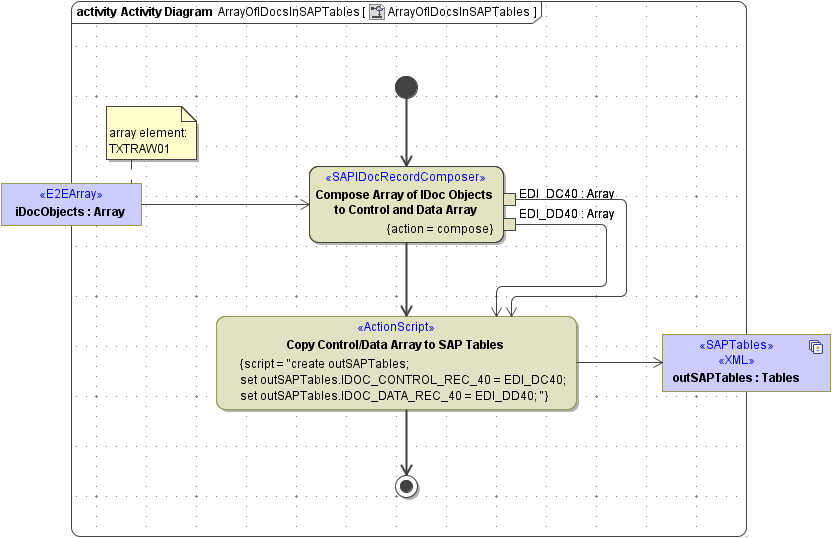
Composing to XML: <<SAPXMLIDocComposer>>
The <<SAPXMLIDocComposer> takes one ore more IDoc objects as input and composes a Blob containing the object data. The structure of the data is kept (padding).
NameTypeDirectionDescriptionanyObjectFlowAnyinParsed IDoc object(s)The class specifying the type of this parameter must have stereotype <<SAPIDoc>> and <<XML>>.The input object must be named exactly after the root element of the IDoc, e.g. TXTRAW01. If not, the model will throw an exception at runtime.idocBlobBloboutBlob containing IDoc data (e.g. the content of an IDoc file)
The following example is demonstrating an application of the <<SAPXMLIDocComposer>>.
Composing Multiple IDocs to an XML Blob
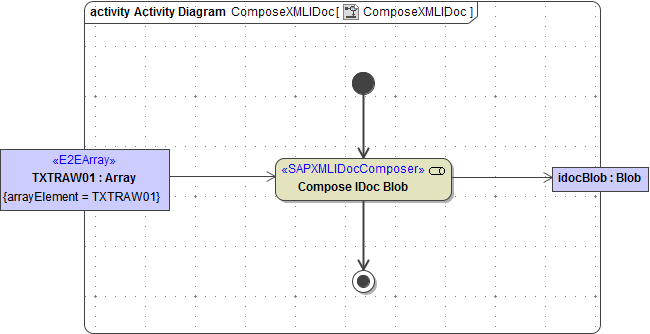
IDoc Composition and SAP R/3
The above examples show how to compose IDocs version of 4.x. However, SAP R/3 3.x systems use IDocs, too. These IDocs are handled similar as in version 4.x. The differences between composing version 4 and version 3 IDocs are as follows :
-
IDoc3 Composer Stereotype: <<SAPIDoc3Composer>>
-
IDoc3 Stereotype: <<SAPIDoc3>>, this is taken into account if the import was done in version 3 mode (see Importing SAP IDoc Meta Data).
